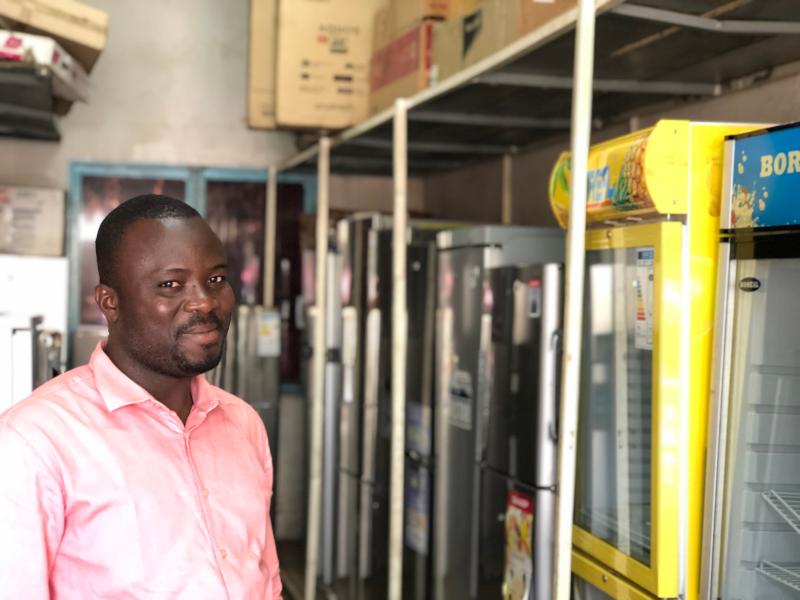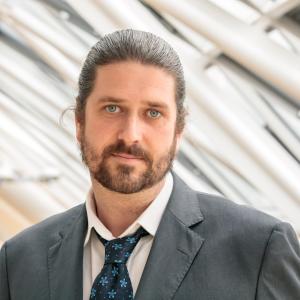Small businesses get a big boost from a Burkina Faso microfinance lender
Mariam Koanda rearranges the fruit and vegetables she sells on a busy street in the capital of Burkina Faso. After 30 years in the trade, the last few years have been particularly satisfying because she expanded her business and attracted many new customers for her mangoes, papayas, grapefruit and bananas.
She always wanted to build her business, but she couldn’t get financial support. When a local branch of the Agence de Crédit pour l’Entreprise Privée opened in 2012, Mariam was finally able to get a loan and add a wholesale business.
“I am a happy person,” she says. “My work is going well. It doesn’t tire me out. I am lucky. There are plenty of people who are older than me who don’t have what I have.”
Small loans and simple procedures for Burkina Faso microfinance
ACEP, as the lender is known, is a microfinance company that gives small loans to help businesses grow. It operates in five African countries. It started in Senegal in 1989, before expanding to Madagascar, Cameroon, Burkina Faso and Nigeria. ACEP helps very small businesses stay alive. The firm’s model is similar in all locations: open an office, get to know people, attract investment and start giving tiny loans using simple application procedures.
One of the investors in ACEP Burkina is the Luxembourg Microfinance and Development Fund. This fund has invested €35 million in 53 emerging and promising microfinance institutions across the world. The fund supports micro-entrepreneurs that can’t get help from regular banks. Its investment in ACEP Burkina is a little higher than average, at €760,000. The European Investment Bank contributed €5 million to the Luxembourg fund as part of the Bank’s goal to make a real impact on small businesses in emerging economies.
Small businesses in Burkina Faso are the motors of the country’s economy. But the problem, as in many emerging markets, is that many entrepreneurs can’t get loans. ACEP Burkina is solving this problem. It now has seven branches in the country, from Ouagadougou to Bobo-Dioulasso, Kaya and Koudougou. It has 24,000 clients and is the second largest microfinance institution in the country.
Local convenience for Burkina Faso microfinance projects
“We have established ourselves here because we are flexible and open, and can help people in a few days. That’s not standard for banking in Burkina Faso. And certainly not outside of microfinance,” says Valentine Nebié, an investment manager at ACEP Burkina’s head office on Avenue Loudun, just a few steps from Mariam’s shop.

Valentine Nebié, a microfinance investment manager in Ouagadougou, enjoys going out on the streets, meeting clients and helping small businesses grow.
Mariam is happy that she can visit ACEP easily, and decisions are taken quickly. “I think once ACEP gets to know you and know how you run your business they are a great help,” Mariam says.
She particularly appreciates ACEP’s work with women entrepreneurs. “My oldest child, my daughter, is a businesswoman like me. Maybe we are better at this than men. We already have to fight for what we have, so you can be sure we are going to put everything into the companies we have built ourselves,” she says.
Zabda Moussa is another entrepreneur in Ouagadougou who has developed a close relationship with ACEP. Zabda runs an electronics sales and repair service from his shop on Avenue de la Nation.
He sells and repairs ovens, microwaves, washing machines, fridges, freezers, air conditioners and televisions. His clients are based in Ouagadougou and other major Burkina Faso towns and cities, and are looking for bulk orders for a business or a house.
Zabda provides the equipment from his stock or finds it for them. He also does the installation and maintenance. He employs four people, and his stock does not come cheap: His clients want the latest technology from Samsung, LG and Sharp.

Zabda Moussa runs an electronics shop in Ouagadougou. Microfinance loans have been essential to his success.
Overcoming obstacles with Burkina Faso microfinance
“I have found ACEP Burkina to be very helpful, as well as quick and easy to work with,” Zabda says.
When setting up his business he struggled to find the right financing. Banks proposed a minimum business loan of 20 million CFA francs, or about €33,000. But he didn’t need that much. There also were many delays. “There would be a month to analyse your application, two more months to grant a loan,” he says.
Zabda’s first loan with ACEP Burkina, in 2016, was for 7 million CFA francs, or about €10,000. It took a week from the moment he applied until he received the money. “For a business owner like me, when a project comes along, you need to be able to react quickly. I feel ACEP Burkina’s financing enabled me to do that, and that is why I go back to them.”
Zabda is one of the first ACEP Burkina clients to qualify for larger financing for slightly larger companies. He now has received 20 million CFA francs as a loan—which he didn’t need in the beginning. For the future, he hopes to open more shops and continue working with ACEP.
“I have clients in Fada-Ngourma, Kaya and Koudougou. It would be good to be closer to them and not lose time dealing with things from here in Ouaga,” Zabda says. “It would also enable us to get more business, and I would like that. If today we are at 20 million, why can’t we be at 100 million in the future?”
Burkina Faso microfinance fosters financial inclusion
ACEP Burkina hopes to become the largest microfinance institution in Burkina Faso.
“Digitalisation and financial inclusion are in our thoughts and in our clients’ thoughts,” says Valentine, the ACEP investment manager. “They say they are tired of travelling to agencies and waiting for some hours, so we are looking at making credit renewals digital, for example. We can see that becoming popular.” ACEP is training staff on this technology and hopes to offer the service to existing clients. This convenience should attract new clients.
Valentine is motivated to make a difference in the lives of people like Mariam. “My favourite part of this job is going out and meeting people and seeing how we can help them, and seeing how they are changing their lives,” she says. “When Mariam started with us, she borrowed one million CFA francs. Her last transaction was five million. That shows how her business has grown. I love this aspect of my job.
“Look, if you don’t go out into the street and engage with people, you just can’t do microfinance.”
